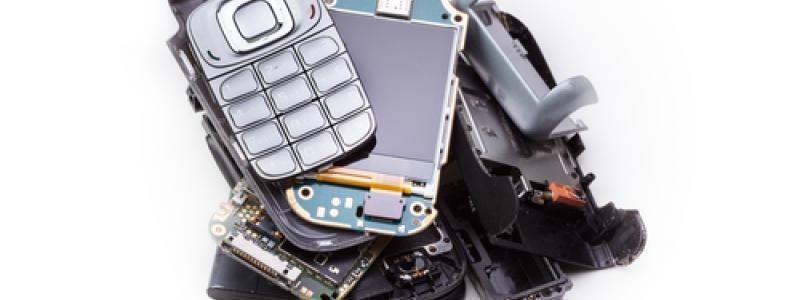Self-Assembling Cellphones, Anyone?

MIT’s Self Assembly Lab has created a small chair that can assemble itself. Now the same lab crew has focused its attention on another common, everyday object -- the cellphone. Yup, the Self Assembly Lab is exploring the idea of a self assembling cellphone, more specifically, looking at ways in which a number of individual components can be placed in a spinning tumbler and form together to become a fully functioning cellphone.
According to Skylar Tibbits, co-founder of the Self-Assembly Lab at MIT, he was initially inspired by the DIY cellphone project began by MIT about four years ago. In that project, the objective was to find a way in which one can make use of different parts worth $100 or $200 and then build your own cellphone.
That DIY cellphone project by MIT, however, required some human effort in assembling. What Tibbits and his crew are trying to achieve now is to find a way in which a cellphone can assemble itself without any assistance from any person, robot, or production equipment. As of this writing, Tibbits and company have already managed to get half a dozen different parts to shape into two separate handsets.
By any measure, this is not simple science at all. Apart from worrying about each component needed to build the cellphone in the first place, the team had to make sure that the rotating tumbler they use is moving fast enough to juggle all the components around. Of course, they have to achieve this without the parts breaking apart or sustaining any damage. Then there is that tricky part of actually getting the parts to connect to each other at the right time, and in a safe manner. In order to do this, the crew took full advantage of magnets. Take that, Magneto.
As for the finished product, it sort of looks like a cellphone from the 1990s. As far as aesthetics are concerned, it may not hold up against today’s sleek and stylish smartphones. But hey -- it does turn on, which is an impressive feat considering it assembled itself from a rotating tumbler with no human intervention.
It was in 2013 when Tibbits and his crew first started working on a self assembling cellphone. After more than a year of tweaking, the process still remains simplified (relatively) and low budget. Tibbits, however, claims that the process is completely feasible to be scaled up to mass production level.
Related Blog Articles
- Walgreens Becomes First Retail Store To Directly Integrate Rewards Points With Android Pay
- More New Emoji Are Coming Soon
- 55 Million Users In The First 30 Days Is Awesome, But Can Pokemon Go Keep This Up?
- FTC Vs AT&T Data Throttling Case Dismissed
- US Mobile Customers Get A Better Idea Of Their Actual Wireless Needs Through Machine Learning
- Introducing The Moto Z Play: The Newest Addition To The Moto Z Family
- Sony Announces Xperia XZ And Xperia X Compact Smartphones
- Americans Now Spend Half Of Their Time Online Via Smartphone Apps
- A Guide To Samsung’s Recall Of Its Galaxy Note 7
- Here Comes The iPhone 7 And The iPhone 7 Plus
Related Blog Posts
- New York Governor signs Right to Repair bill into law
- Mint Mobile is recent SIM swapping victim
- Verizon Wireless text outage affected “a ton of customers”
- Congress Pressured To Enact GPS Tracking Reform After Supreme Court Refused Hearing Cell Phone Case
- Sprint Gets Caught Charging Extra for Having Bad Credit


 Menu
Menu